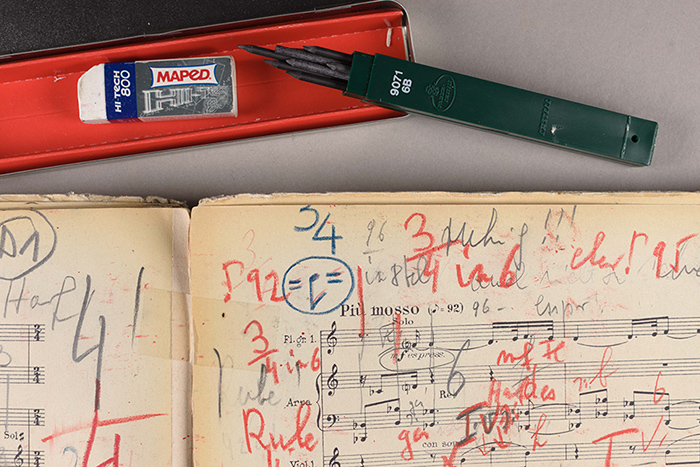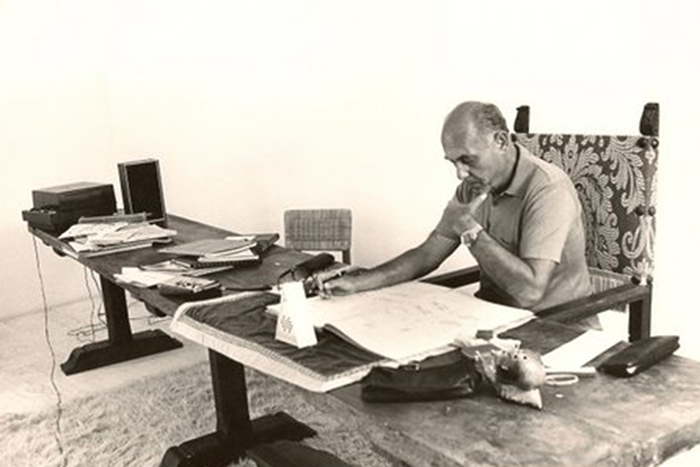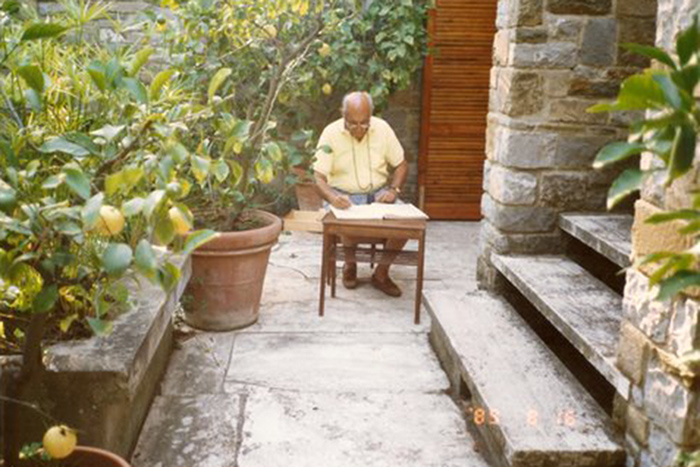Throughout his life, Solti revisited the scores from which he conducted; many are covered with layers of markings, tracking interpretive choices, metronome markings, and performances across years and even decades.
A conservation assessment of Solti’s scores by the Harvard Library Weissman Preservation Center notes his use of various media to annotate the pages. The identification of all media used and an understanding of Solti’s working methods are crucial to the development of a conservation and preservation plan for the collection. This colored pencil, still available today, was manufactured by Schwan Stabilo, a company which began making colored pencils in Germany for artistic use in 1925. Made of a colorant (pigment or dye), binding material (cellulose ethers, vegetable gums), and wax (paraffin, beeswax, carnauba wax), Solti’s pencil is “aquarellable” or water soluble. Solti’s media choices for annotation evolved over his career. In the early part we note the use of thin lines in red, black, purple, and pink colored pencil as well as the use of ballpoint inks in red, blue, and purple. Graphite in thick soft lines is a media found throughout the scores. More prominently used was a black, and most often, RED China Marker grease pencil, made of wax (paraffin, ceresin, carnauba, spermaceti), colorant (pigment or dye), tallow (beef or mutton), alkali (potassium carbonate), stearic acid, filler (talc, kaolin). The thick putty-like lines could be scraped off and corrections made.





